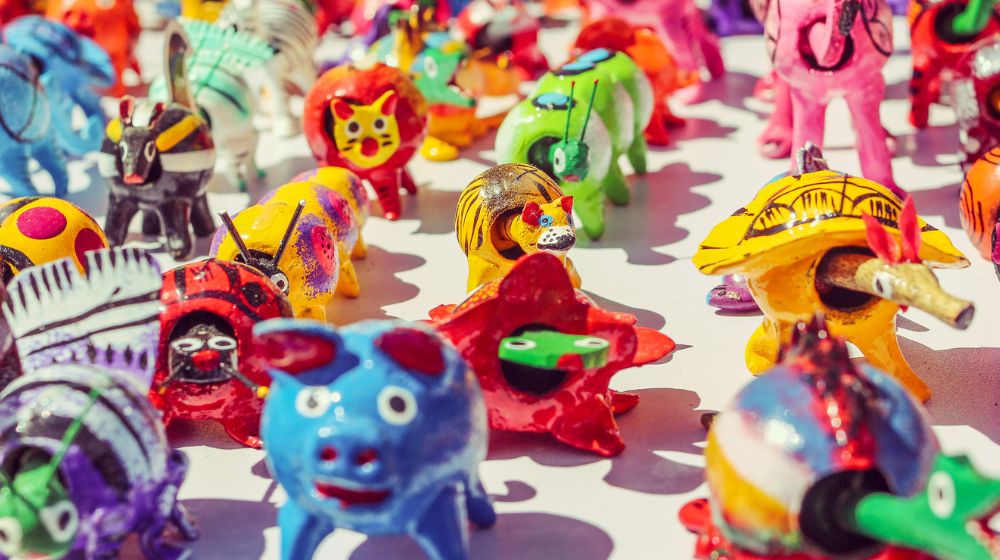


Chinese consumers are getting more sophisticated and have higher expectations regarding the safety of products. Chinese consumers expect imported and foreign branded products to fully comply not only with Chinese regulations but also with overseas standards. Dr Martina Gerst, Standards and Conformity Assessment Advisor at the EU SME Centre, breaks down the complicated regulatory rules in China and offers a step-by-step approach to compliance of toys.
China’s Singles Day, the world’s biggest online shopping event of the year, takes place on November 11 every year. Chinese shoppers last year were spending USD 17.8 bn in 24 hours1.
Besides the increasingly powerful role of e-commerce, Chinese consumers are getting more sophisticated and have higher expectations regarding the safety of products. Chinese consumers expect imported and foreign branded products2 to fully comply not only with Chinese regulations but also with overseas standards. Product safety and consumer rights are increasingly growing in parallel to the unprecedented growth. Every year March 15th, the World Consumer Rights Day is a big deal in China. In China’s ‘name-and-shame’ TV show “CCTV March 15 Gala” (晚会 3.15), companies and platforms were targeted for unfair practices by the country, for example for selling dodgy health products3. Savvy consumers are pushing for being adequately informed about the authenticity of products purchased via E-commerce; regardless whether these products are domestically produced or imported from abroad like from the European Union (EU).
The EU is China’s biggest source of imports. China and Europe are currently trading more than €1 billion a day, industrial and consumer goods likewise4. In practice, this concretely means for manufacturers on both sides, compliance with respective local or regional regulations and mandatory standards (the so-called [GuoBiao] GB standards) is essential. No compliance – no sales.
So, what implications European companies face when planning exporting to China?
In a nutshell, market access for products and services to China is generally not free. For many product categories, government approval is required before goods can be imported to the Chinese market – this is the first big difference European companies have to face when thinking of exporting to China. These approvals come in various forms, such as licences, certifications, registrations, marks, and even individual approval of shipments. They are issued by the government itself or by appointed bodies acting on behalf of the government. All of these approvals have one thing in common: They will be regularly checked at the borders or, in case of China domestic production, by inspection authorities5.
The scale and thoroughness of inspections relating to product safety probably exceed those of any other economy worldwide. As such, it is of utmost importance that any organisation planning to export consumer goods to China becomes familiar with the Chinese regulatory framework, standards, and conformity assessment environment.
The regulatory world in China is a world of its own and very often difficult to navigate for EU companies.
In what concerns the highly sensitive issue of product safety, in order to be compliant to China’s solid but complex regulatory environment, a company needs to get familiar with the web of product safety law, regulations for supervision and administration of products, ministerial orders and last but not least, compulsory and voluntary standards, instructions, and other rules.
In general, related to product safety, the three “must-know” government organisations in China European companies should be aware of are AQSIQ, SAC, and CNCA.
The highest government unit responsible for implementing the product safety law is The General Administration of Quality Supervision, Inspection, and Quarantine (AQSIQ) – a ministry under direct supervision of the State Council. AQSIQ has an overarching function to regulate, coordinate, and supervise the respective activities across all ministries.
Directly under AQSIQ, two vice-ministerial government agencies are worth to be noted – the General Administration for Standardisation (SAC), and the Certification and Accreditation Administration of China (CNCA). Both bodies have regulatory power and control over all nationwide activities in their respective areas.
At the regional level (provinces, autonomous regions, and municipalities), the regional government is in charge of implementing and administering the activities of AQSIQ. Most provinces have two authorities in place for performing this task: the Bureau of Quality and Technical Supervision (BQTS), and China Inspection and Quality Services (CIQ). These provincial institutions are also in charge of the practical operations of all market surveillance activities in China6.
One important element of China’s product safety system that is of high relevance to EU companies, is the China Compulsory Certification (CCC). CCC is particularly important for consumer products, since it covers many types of electrical and electronic household appliances.
The system consists of a compulsory certification, issued by a government-appointed certification body, and a mark, controlled by a government agency. The product categories that require CCC certification are listed in the CCC catalogue. For products not listed in the catalogue, it is not possible to obtain CCC certification. The CCC system is not a self-declaration and is not comparable with Europe’s CE-marking.
The CCC system unifies the certification process for many products and ensures that the same rules apply both for imported and domestically manufactured products. Current requirements of the CCC system are basically built on a one-size-fits-all system, not always related to the level of risk inherent to the products.
Core elements of CCC consist of mainly four steps: watertight technical documentation already provided in the application, shipping of samples, type testing and factory inspection.
If all goes well during the certification process, ideally, the CCC certificate will be issued after a year. It is valid for five years, under the condition that regulations for maintenance of the product certificate are met.
Children’s toys are one European product that is very popular with Chinese parents and currently often purchased online. Therefore, it is very closely monitored for compliance of CCC.
Therefore, for a toy manufacturer, it should be therefore very clear that he has to make sure that his products comply with quality, safety, labelling and the CCC certification.
A systematic approach is required to find a proper path through the maze of Chinese compliance regulations. Such an approach should cover not only the products themselves, but also the most common components and relevant spare parts if required. Depending on the responses to the questions below, it may be advisable to source some of the components in China rather than subjecting existing components to a complicated and costly certification and licensing process.
Questions include:
For toys, the CCC catalogue lists six toy categories to be certified and to put the CCC logo on the toy before selling it in China:
For most toys, the most important mandatory standard is GB 6675-2014, defining the safety requirements. The standard consists of four parts addressing basic safety concern and physical, flammability and chemical safety.
Electric toys for example, in addition will also have to meet the mandatory standard GB 19865-2005 for Electric Toys – Safety.
Key recommendations to consider when navigating the system:
In general, the system very different from Europe and compulsory standards are the key to compliance. Compliance in Europe does not necessarily mean access in China – albeit many requirements are similar. The system requires expertise on the ground in China and time-to-market, as well as cost for small series are not negligible. Last but not least, compliance and certification have an impact not only on the manufacturer and the importer but on the entire supply chain.
Many companies have paid a high price for ignoring both the importance that China gives to product safety and the effectiveness of its enforcement mechanisms. AQSIQ regularly posts pictures on the internet showing the destruction of imported consumer goods that have failed to meet Chinese safety regulations. For the companies involved, this has consequences beyond the financial losses incurred due to the confiscation of goods. They must also pay fines and deal with the additional costs of increased inspections for future exports to China.
References
1 F. Lavin, Nov. 15th, 2016, Singles’ Day Sales Scorecard: A Day In China Now Bigger Than A Year In Brazil, at https://www.forbes.com/sites/franklavin/2016/11/15/singles-day-scorecard-a-day-in-china-now-bigger-than-a-year-in-brazil/#d63d39b1076e (last accessed May 1st 2017).S
2 China’s Name-and-Shame TV Show Puts Household Brands on Edge, https://www.bloomberg.com/news/articles/2017-03-14/china-s-name-and-shame-tv-show-puts-household-brands-in-hot-seat (last accessed April 27th 2017).
3 J. Guo, Consumer Day shame for companies in China, http://supchina.com/2017/03/15/consumer-day-shame-companies-china/ (last accessed April 24th 2017).
4 China (2017), http://ec.europa.eu/trade/policy/countries-and-regions/countries/china/
5 More details can be found on the Product Safety and Conformity Assessment for Consumer Products guideline.
6 For more details about China’s regulatory bodies across different sectors, see the “Who-is-who” guideline on the Centre’s website
7 For more details about CCC and compliance, further information can be found in the Centre’s CCC and product conformity guidelineshttps://www.eusmecentre.org.cn/publications/updated-guidelines-on-the-china-compulsory-certification-ccc-scheme/
About the EU SME Centre
The EU SME Centre in Beijing provides a comprehensive range of hands-on support services to European small and medium-sized enterprises (SMEs), getting them ready to do business in China.
Our team of experts provides advice and support in four areas – business development, law, standards and conformity and human resources. Collaborating with external experts worldwide, the Centre converts valuable knowledge and experience into practical business tools and services easily accessible online. From first-line advice to in-depth technical solutions, we offer services through Knowledge Centre, Advice Centre, Training Centre, SME Advocacy Platform and Hot-Desks.
The Centre is funded by the European Union and implemented by a consortium of six partners – the China-Britain Business Council, the Benelux Chamber of Commerce, the China-Italy Chamber of Commerce, the French Chamber of Commerce in China, the EUROCHAMBRES, and the European Union Chamber of Commerce in China.